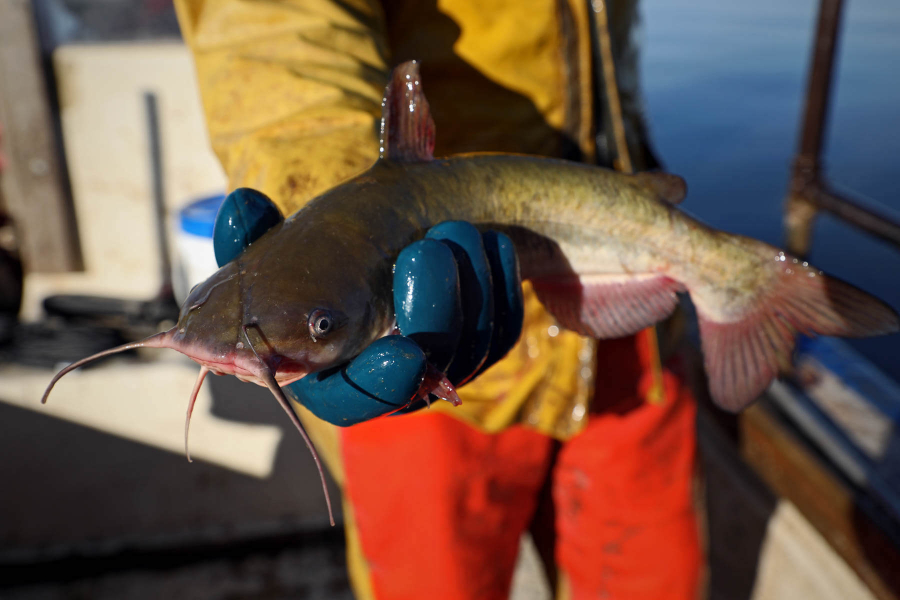Meet a small but tough native fish of the Chesapeake Bay

Catfish, recognized for their whisker-like barbells and lack of scales, come in various colors and sizes. Among notable catfish varieties in the Chesapeake Bay is the white catfish, Ameiurus catus, also referred to as the white bullhead. What these catfish lack in size, they make up for in resilience.
A Chesapeake Bay native
White catfish are found all along the Atlantic Coast, from New York to Florida. While some catfish in the Bay are invasive, the white catfish is a native species that poses no threat to the Chesapeake Bay ecosystem. This fish enjoys the brackish waters of rivers and streams where muddy and sluggish bottoms create ideal habitats. It is also known to tolerate degraded environments more than other fish species and can live in areas with low oxygen levels.
The smallest catfish in North America
Instead of having scales, catfish have smooth skin. Of the six species of catfish found in the Bay, the white catfish is the smallest, averaging about 12-13” in length. This catfish has a light bluish-gray colored body and a white underbelly. It has a stocky build, a large head and a moderately forked tail with rounded lobes at the end. A white chin with four pairs of whisker-like barbells at the end help distinguish it from other catfish species.
A taste for life
Catfish are unique because they have external taste buds that are located on the ends of their barbells. Simply touching something with a barbell allows a catfish to taste it.
White catfish face competition for food with other catfish species, specifically, the invasive blue catfish. For adults, small fish are a major source of food but white catfish also feed on aquatic insects, small crustaceans, fish eggs and underwater plants. Although adult white catfish do hunt at night, they are less nocturnal than the other Bay catfish species.
In general, catfish can sometimes get a bad reputation for being invasive, but unlike the blue catfish which has become a problematic species in the Bay, the white catfish has been a lifelong local to the Bay ecosystem.

Comments
There are no comments.
Thank you!
Your comment has been received. Before it can be published, the comment will be reviewed by our team to ensure it adheres with our rules of engagement.
Back to recent stories